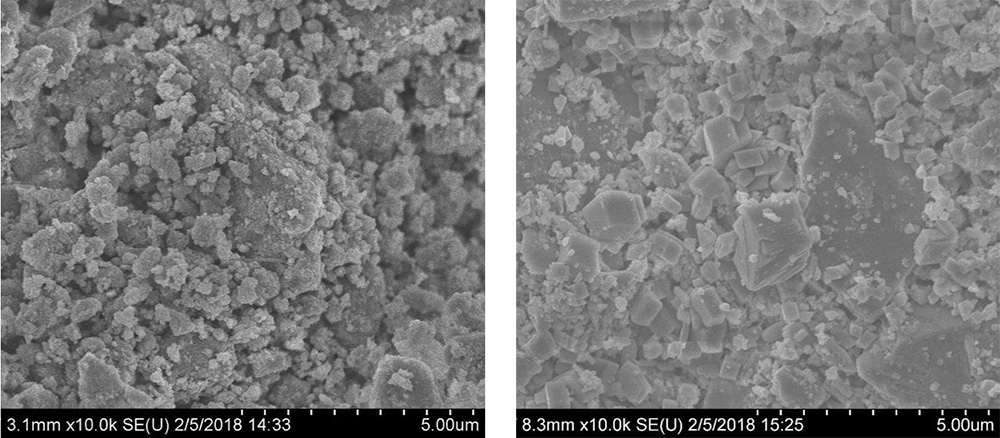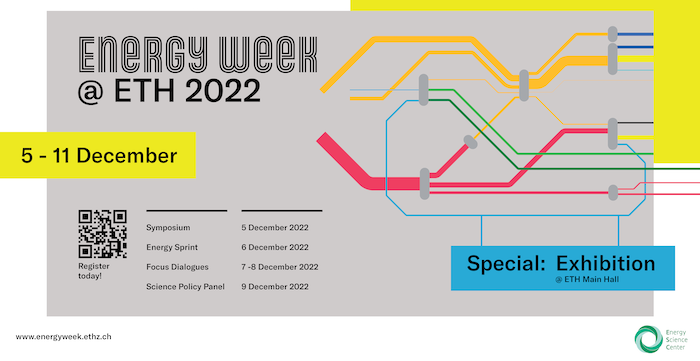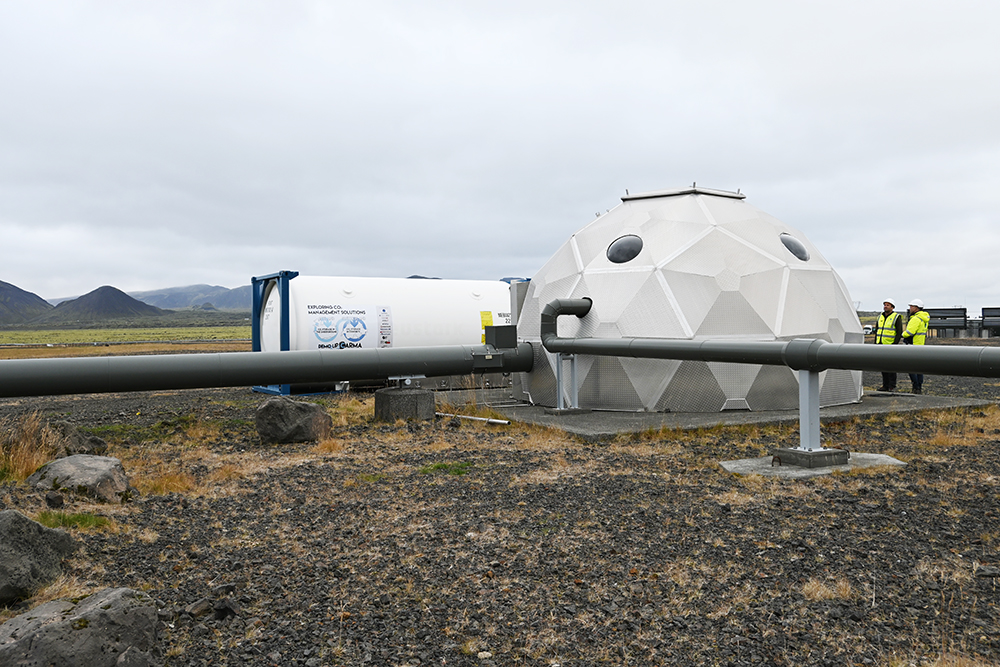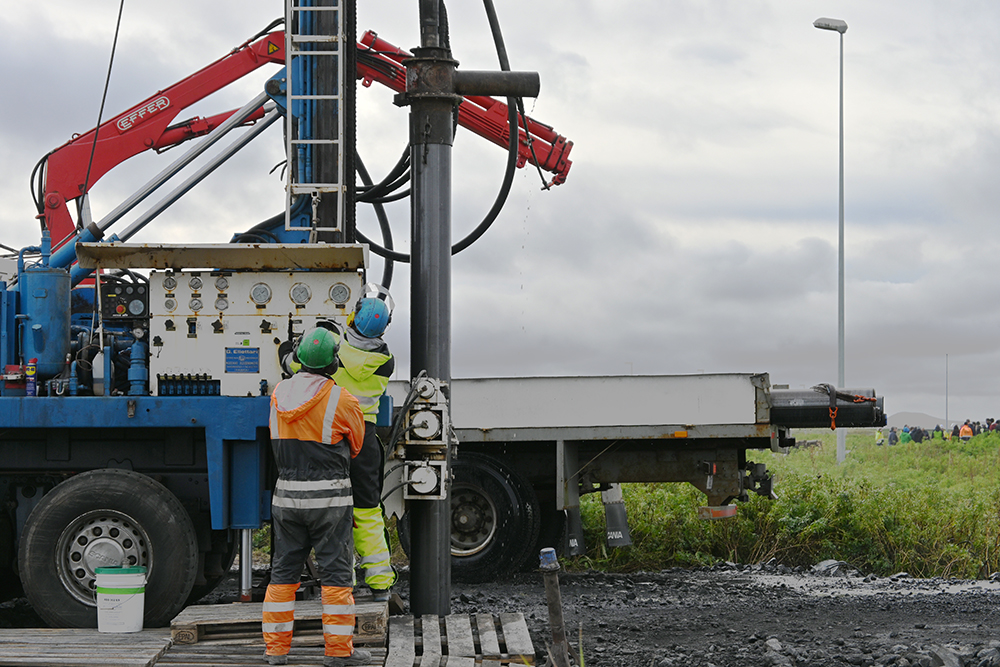News and events
- 2022-12-15
#1 DemoUpBlog

In the first blog post of our newly started DemoUpBlog Johannes Tiefenthaler, leader of work package 2 and co-founder of Neustark, gives an insight into the carbonation process of recycled concrete. The technique contributes to lower the carbon footprint of concrete and is a domestic pathway to store carbon dioxide permanently.
In our two pilot projects, DemoUpCARMA and DemoUpStorage, a broad range of research questions ranging from Earth science to law and social science are being investigated. The DemoUpBlog will provide you with interesting stories and research findings with regards to these topics. Stay tuned!
DemoUpCARMA at the ETH Energy Week 2022

From 5 to 11 December, the ETH Energy Week 2022 will take place again offering a series of talks, discussions and an exhibition focusing on energy transition.
At the opening symposium on 5 December, project leader Prof. Marco Mazzotti will present DemoUpCARMA as part of his talk on “The role of negative emission technologies until 2050”. The programme and registration link of the symposium can be found here.
On 8 December, Prof. Mazzotti will further participate at the Focus Dialogue (17:00 – 18:00 h) to discuss infrastructure requirements for the energy transition. The Focus Dialogues will be held online (Zoom). The registration link can be found here.
- 2022-11-07
Preliminary CO2 injection started in Hellisheiði
Read more...Carbon dioxide captured and liquefied in Switzerland is now being injected underground for permanent mineralization by Carbfix at its existing wells by the geothermal power plant in Hellisheiði, Iceland. Delays in the construction of the new injection facility in Helguvík, which is specifically designed for DemoUpCARMA, CO2SeaStone and DemoUpStorage, required temporary use of Carbfix’s existing wells. Injections at Helguvík are scheduled to start in 2023 after having completed the drilling of the wells and initial seismic monitoring.
Disruptions in global supply chains led to a delayed start of the installation work at the designated injection site in Helguvík, with drilling work still ongoing. In the meantime, the existing injection infrastructure of the Icelandic project partner Carbfix at Hellisheiði will be used to start the injection of Swiss CO2 for permanent mineralization underground. Once the facilities at Helguvík are in place, a novel injection technique using seawater instead of freshwater will be tested. So far, four ISOtainers containing a total 80 tons of CO2 have been delivered to the Hellisheiði site. Once the CO2 has been injected, the ISOtainers will be returned to Switzerland. At ARA Bern, they will be refilled with CO2 and shipped to Iceland.
Established injection process at Hellisheiði
Carbfix developed its mineralization technology at the Hellisheiði geothermal power plant, where it has since 2012, injected more than 80 thousand tons of CO2. The Carbfix process imitates and accelerates a natural process. It requires only CO2, water, and favorable rock formations, with no other elements needed for the mineralization process to take place. The CO2 is captured on site from the nearby geothermal power plant. The mineralization process in the basaltic subsurface has been scientifically confirmed at this location.
Injection of CO2 shipped from Switzerland at the Helguvík site is planned for early 2023, as the drilling work continues. Following the drilling, an initial series of seismic measurements will be carried out before setting up the aboveground injection plant. The focus here is on the application of a new process in which CO2 is dissolved in seawater instead of freshwater before injection into the basaltic subsurface for mineralization.
- 2022-09-19
Seismic network and drilling start
Read more...Preparations for the injection site at Helguvík are in full swing. The drilling work has started, and the seismic network is now in place.
In Helguvík, a community northeast of Keflavik Airport (Iceland), drilling operations have begun. Drilling is currently underway for the monitoring borehole to be used to investigate the mineralization of the CO2 with geochemical methods. The drilling for the nearby injection borehole will start soon after the completion of the first well. Later, the CO2 from Switzerland dissolved in salt water will be injected into the basaltic subsurface via this borehole.
Once the drilling is completed, the injection equipment will be installed in a container directly at the end of the injection borehole. The injection of the CO2 is expected to start at the end of the year. Supply bottlenecks due to the COVID pandemic and the conflict in Ukraine led to delays, which delayed the originally planned earlier start of drilling.
Parallel to the drilling work, a team from the Swiss Seismological Service at ETH Zurich has set up a seismic network consisting of five measuring stations. These are placed within a radius of 300 meters around the planned location of the injection well to measure changes in the subsurface that could potentially occur in connection with the injection of the CO2-saltwater mixture in the subsurface.
The injection site is located in an industrial area, so that no noise pollution or other adverse effects can occur for the population of the neighboring municipalities of Suðurnesjabær and Reykjanesbær.




